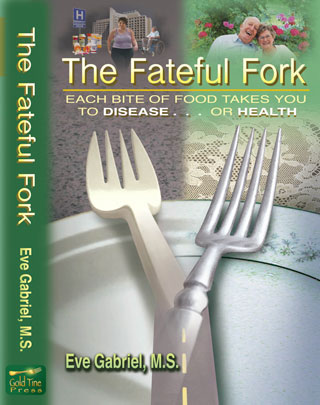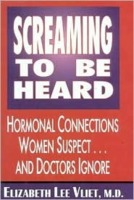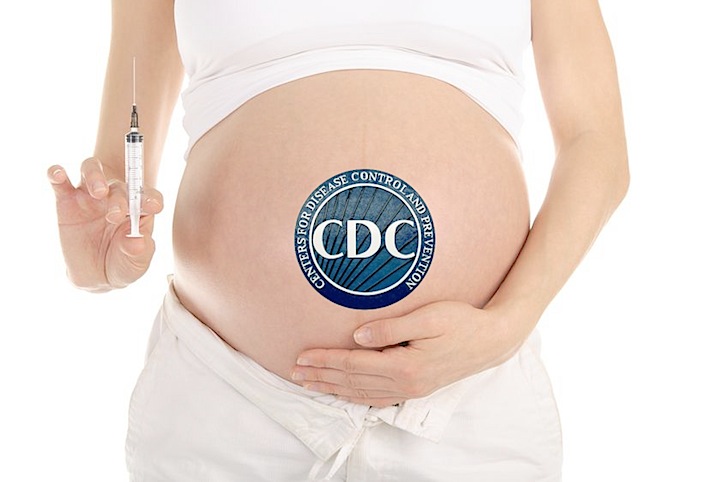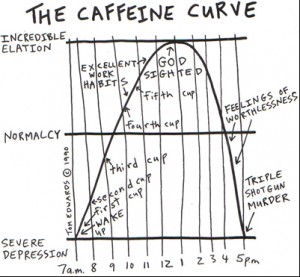I knew very little about vaccines before our son came along.
If you’d asked me whether I would vaccinate my children I would have said, “Of course”. I mean, nothing happened to me and I didn’t contract any of the diseases I was vaccinated against. Why wouldn’t I want the same for my child?
Well, things have changed since the 60’s when I was born. I received 6 vaccines and 2 of those were in the 1st grade. Today, a child gets 32 doses of 12 vaccines before the age of 2!
“That’s great!” you may say. “Medical science has come a long way!”.
Uh. . . .No, not really.
A Web Search and A Can Of Worms
What started out as a quick web search before Timothy’s vaccination appointment turned into serious concerns and heated discussions between my wife and I. We even tried using google search terms that were deliberately positive in hopes of finding thumbs-up recommendations on any of the vaccines. Out of the 12 on the CDC’s schedule we found some positive things to say about 4 of them. Feel free to give it a try. Most of the positive comments are by a government or pharmaceutical company source.
Two months is not much time to make optimal vaccine choices for your baby. That’s how long parents have to wade through the pros and cons.
Two months. What am I saying? They come at your baby with a syringe full of hepatitis B the day he’s born!
Is all this necessary? Well, I’ll tell you our answer in this article and I hope it saves you some time in coming up with yours.
Executive Summary for Busy Parents
The increased number of vaccines is more a tribute to the sales and marketing of pharmaceutical companies than to better protection for your child.
The drop off in measles, diphtheria, scarlet fever and whooping cough that everyone thinks the vaccines accomplished has more to do with better nutrition, improved sanitation and cleaner water than anything else.
After doing extensive research we did decide to vaccinate our son. But, we’re making specific choices about which vaccines truly protect him and those around him. We’re also using advice from doctors (With no vested interest or liability), our intuition and research to decide on vaccines that builds up his immune system rather than destroy it.
In order to achieve these goals we’re throwing the CDC’s schedule (of insanity) out the window and into the trash where it belongs. There are vaccines on the CDC schedule we’re going to give our son, but, not on their schedule and not all at once. That’s because the CDC’s vaccination schedule is:
- Too Much
- Too Soon
- Too Many
- Too Toxic
Here’s an excellent article by Doctor Donald W. Miller with a broad, balanced and thoughtful view and vaccination schedule that will protect your child and the children they interact with. As Dr. Miller’s predicts in his article, most pediatricians would be shocked by his recommended departure from the CDC schedule.
Another balanced view by an excellent doctor is put forth by a source many pediatricians are already familiar with: Dr. Bob Sear’s, The Vaccine Book: Making the Right Decision for Your Child.
We’re about to make final decisions on what vaccines to give our son. One way to summarize what we’ll do would be to say:
- Not zero.
- Not everything.
- Not all at once.
Decision Criteria
Our criteria for anything injected into our son is:
- Does more good than harm.
- Strengthens rather than destroys the immune system.
- Does not shock or confuse his body.
- Protects him when traveling and other known risks.
- Protects others around him.
Common sense? I thought so. Aren’t these these the stated goals of the CDC?
If I thought the CDC schedule came anywhere near achieving these goals I wouldn’t have put so much effort into all this research and writing this article.
First Do No Harm
That’s the oath all doctors take. Sounds good. I’m taking it too when it comes to my baby. I hereby swear.
So why do so many of the vaccines have a negative effectiveness rate? No kidding, the vaccine gives you more chance of getting the disease its supposed to protect you from than if you weren’t vaccinated, at all?
Ok, stop laughing. This is serious business when you’re trying to sell vaccines. . . . I mean for parents.
If I want to protect my child from disease A and find that I increase his protection from disease A by not taking the vaccination for it then the choice is easy. Throw in the added benefit of withholding from our 8-week old baby a dash of mercury, formaldehyde, latex, monkey kidney and other goodies and the decision is a slam dunk!
Ok, vaccines in this category are the easy ones to decide on. But, avoiding harm while deciding on vaccines that may benefit your child is the approach to take with all of them.
New Parents Are Blind-sided
Timothy was 1-day old when it was “time for his Hepatitis B shot”.
Well, it wasn’t time for Timothy’s’. We declined the shot and said we’ll take care of vaccinations at the pediatricians office. We gave them the doctor’s card and a signature and that was that.
We also declined applying for a social security number while filing for his birth certificate. The clerk came back with the box checked “Yes” for social security number. When we pointed it out he said, “Oh, sorry. Its just that I’ve done 25,000 of these and no one has ever done that”. I believe him.
It makes me think that very few new parents are prepared for vaccination decisions before they have to make them. The CDC schedule is presented to you as if its written in stone. If you protest they make you feel like a bad parent that will never be able to find a daycare, school or pediatrician that will “put up” with people like you.
Wrong on all counts, but, I do admire the expert marketing.
Day Care Visit
We have a day care near the house. I went to visit them and asked about vaccination requirements. The administrator said, “Yes, they have to have them. All parents have a card from their doctors and we verify that they are up to date”.
I was horrified. Did that mean everyone just goes along with the program and any deviation from the state dictated norm was a giant hassle?
No, exemptions are easy. You just download the form, print it out and sign it. And that form stays on file with the daycare. Done. From the daycare’s perspective your child is now “Up to date”.
Same goes with schools or any other facility you may be concerned about.
Spoke With Doctors
Our OBGYN was in favor of giving all the vaccines. And she put her money where her mouth is by administering them to her kids. I don’t agree with her. But, she was consistent and goes down as one solid yes for the CDC schedule.
My mothers’ doctor was all for them, too. He doesn’t have any kids, so, that’s less of an endorsement than our OBGYN’s. He said he’s seen some people with the conditions that could have been prevented by the vaccines and that convinced him. At the time, I wasn’t knowledgeable enough to ask questions about specific vaccines.
And, finally, our current pediatrician is in favor of the CDC schedule. On our first meeting we weren’t even there to discuss vaccines and I wasn’t in a position to be specific about them, yet. She mentioned that after 2001 they don’t have mercury anymore (Thank you O’ previous parents). In many cases, she’s right about that. However, the flu shots still have mercury (Thimeresol) and there are many other ingredients to be concerned with besides mercury. More on our vaccine meeting with our pediatrician, later.
Ok, so the doctors were 3 for 3 in favor. No wonder everyone just gets them all. Who wants to go contrary to those odds?
Well, maybe it was just my sample. Because, research turns up dozens of doctors who not only disagree with these three, but, have done extensive studies and research on why they don’t agree.
Spoke with other parents
Most just went along with the program, of course. One of our friends makes sure that no more than three shots are given in any one visit. That has the effect of letting the immune system get some time to react before intoducing another vaccine immediately. That’s definitely a good thing to do.
Overall, who has time to sift through all this information? And parents are threatened with the law and lots of hassles if the don’t so what do you expect?
One thing that came up in three of the conversations was that they knew of someone with autism whose parents suspected was caused by vaccines. I’ve only talked with four parents, so far, so that’s a high hit rate (And I didn’t bring it up).
Caring vs. Emulating
I care about people and want to listen to their stories and what they are doing and going through in their lives and their children. That doesn’t mean that I can always find something in their experience to emulate. I think all parents want to learn from each other, but, we should also have the strength of our convictions to follow through with our beliefs on what’s best for our kids.
In my case, my ‘beliefs’ on the subject have been formed by an exhaustive review of as much research as I can digest. I offer this article as one of many sources that may compress time and serve as a gateway to their own research.
Mommy & Daddy in Sync?
No, not completely. But, we owe it to our son to go with our collective best choices. My wife was persuaded by the 3 doctors we asked to go along with the full CDC schedule. Frankly, so was I. Re-read the “. . . Can of worms” section above for why we did’nt do that.
The benefits of going along with the program are considerable:
- No explaining to do
- No research necessary
- No problems with pediatricians
- No tension with you spouse or other family members
- No exemption to download and sign and possibly explain to whoever
- The warm cozy nod from all government agencies and pediatricians that you’ve been responsible parents and ‘done the right and educated thing’.
Fantastic. But, those are benefits for the parents and this decision is about our son.
Gulf War Syndrome
This was an interesting discovery while researching vaccines. It turns out that many consider this GWS everyone is talking about to be due to the compressed vaccination schedule of the troops just before they’re deployed.
Take Vitamins Before Getting the Vaccine
According to Dr. Betty Martini, D.Hum.:
“Numerous studies have shown that nutritional depletion, even of one or two nutrients, dramatically increases vaccine complications. This is especially so for Vitamin A (as mixed carotenoids), vitamin E and vitamin D3. I would recommend a daily multivitamin/ mineral supplement without iron. In addition, I would recommend 1000 mg. of ascorbate (as magnesium ascorbate) three times a day between meals, vitamin E either as d-alpha-tocopheryl succinate or mixed tocopherols (natural vitamin E) 400 IU a day and DHA oil capsules-100 mg. three times a day. Dosages for children would have to be adjusted for weight and age. Vitamin D3 is particularly important since it is known to regulate immune reactions and calm down those reactions that are overactive. New studies have shown that adults should be taking 1000 to 1500 IU of vitamin D3 instead of the previous 400 IU recommended by the government. A number of experiments have shown that vitamin D3 can significantly reduce the neurological damage caused by multiple sclerosis-like experimental reactions (experimental allergic encephalomyelitis). ”
What About the Other Kids?
I believe we have a moral obligation to consider the implications to society (Other kids) when making vaccination choices for our own baby. As I’m going through each vaccine other children than our own are a big factor in making our final (Optimal) choice.
Travel
We are all only a jet plane ride away from an infectious disease from another continent.
When Columbus discovered the new world he also killed most of the people living there. Infectious diseases from Spain made the sword unnecessary.
The only difference between his ship and our planes is the planes are faster and there’s more of them. For that reason, even if you Don’t Travel with your baby you are, in effect, still traveling because ‘foreigners’ are coming to you.
Travel is a prime consideration for letting Diphtheria, Pertussis, Tetanus and Polio stay in your child’s vaccine schedule. When they should be given is a different matter.
Play The Vaccine Lottery
“My child got all the vaccines and she’s fine”.
I have two responses to this:
- Thank God . . . .your child handled the shots, well.
- Think of your vaccination card as a lottery ticket. 1 in 68 ticket holders are autistic and 1 in 6 have some kind of learning disability, neurological problem, or autoimmune disorder like Type I diabetes, rheumatoid arthritis, asthma or a bowel disorder. Later in life ticket holders are entitled to an increased chance of getting cancer or problems associated with having a live virus in their spinal column for the rest of their lives.
Low Criteria for Success
Since there are no long term studies on the effects of vaccines what is the criteria of success?
Simple: A vaccination is successful if your child doesn’t have any seizures, intestinal obstruction or anaphylaxis (severe, whole-body allergic reaction) within 4-6 weeks of the shot(s).
What happens later? I couldn’t tell you because nobody can. There are no follow-up studies. Even if there were, which of the 12 vaccines are you going to blame?
That makes for an excellent defense in court, doesn’t it? It wasn’t our vaccine, your honor, it was those other eleven they’re baby was injected with.
Japan’s Two Year Delay (And the Amish)
My wife was asking for study results showing the benefits of delaying vaccines until two years of age. That’s what Dr. Donald Miller recommends to minimize brain damage. He says the brain is at least 80% developed by then.
Since there are no long term tests on the effects of vaccines I couldn’t offer her any. But, I could offer her the results of the entire nation of Japan and the Amish. When the Japanese government started losing vaccine cases and having to pay up they decided to relent and delay the vaccines until age two. That’s when their SIDS rate plummeted by 90%! Raymond Obomsawin, M.D. says:
“Delay of DPT immunization until 2 years of age in Japan has resulted in a dramatic decline in adverse side effects. In the period of 1970-1974, when DPT vaccination was begun at 3 to 5 months of age, the Japanese national compensation system paid out claims for 57 permanent severe damage vaccine cases, and 37 deaths. During the ensuing six year period 1975-1980, when DPT injections were delayed to 24 months of age, severe reactions from the vaccine were reduced to a total of eight with three deaths. This represents an 85 to 90 percent reduction in severe cases of damage and death.”
The Amish have no Autism and they’re not dropping dead from the diseases the CDC is warning us about, either. They’re like Hawaiians who have no word “snow” in their vocabulary because it doesn’t exist in their world. But, the Amish have two words they don’t need in their vocabulary: Vaccine and Autism.
Making Your Optimal Choice
Much of the information on the web is from the three groups of people who have the most to gain from speaking up:
- Pharmaceutical Companies who are selling their product
- Parents Who Have an Injured Child Trying To Help Others
- Government sources promoting public policy
Sometimes its hard to distinguish between the drug companies and government sources. Both are 100% positive on every vaccine and 100% negative on whether any cause more harm than good. The parents become better sources as their objectivity is restored after the incident with their child.
So, it can be hard to get an objective view of all sides of the issues with the twelve vaccines. The best sources I’ve found were doctors who used their education to take an objective view of vaccines. They don’t work for drug companies and just decided to delve into the subject. Then you start to really got all sides of the issue.
All Experience is Anecdotal
If you shut your car door and lock yourself out because the keys are in the car you’ve had yourself a personal experience. Will you learn from that experience? Will you change your behavior and avoid locking yourself out again?
If you say, “Yes” or “Probably” or “Maybe” to that question then your conducting bad science according to the AMA. All you’ve done is have yourself an anecdotal experience. Unless you’ve conducted a clinical trial of N number of other people locking themselves out of their car you can’t conclude anything about your personal experience. In fact, any conclusions you’ve come to based on any experience you’ve ever had in your life is mere anecdotal evidence. Learn from it at your own risk, pal.
That’s a great way to shut the mouths of all those parents with anecdotal horror stories of what happened after their baby was vaccinated. Bad science. Not valid. Doesn’t mean anything.
Ok, so don’t put the horror stories in your medical study. But, parents with “anecdotal” stories have managed to sue the crap out of pharmaceutical companies for bad reactions to vaccines. So much, in fact, that all 50 states give parents a way to opt-out of all vaccines. They didn’t put the exemption in place to protect or defend your rights. They make it available because state’s attorneys told them parents would sue the state broke if they made vaccines mandatory.
Websites & Sources
Opt Out Forms for Every State
Gary Nulls Vaccine Nation Documentary Video
Shirley-wellness-cafe re: 2 years and sids
Vaccine Friendly Doctors
Try Dr. David Bannister in Roseville or Dr. John Oberholtzer in Davis. I’ve heard they are both respectful of parents’ rights to make informed medical decisions for their children.
Dr. Marcus Porrino
Dr. Rebecca H. Porrino
Sonoma Naturopathic Medicine
710 West Napa St, Suite 1
Sonoma, CA 95476
(707) 996-9355
www.SonomaNatMed.com
Julia Getzelman, M.D.
GetzWell Pediatrics
1701 Church Street
San Francisco, CA 94110
(415) 826-1701
www.GetzWell.com
Selective and delayed vaccination forum
2001 overview by Harold E Buttram, MD
Head of the CDC Admits Autism Link
MMR and Mitochondrial slide show
How To Vaccine Safely
Robert Kennedy on the Vaccine Autism Coverup, thimerosal
Hidden CDC Data Confirms Vaccine-Autism Link
autism-vaccine blog
Gulf War Syndrome: Too Many Vaccines Within One Week
The Law Considers Official CDC schedule to be a Recommendation ONLY
exemption website
Look up History & Ingredients of EVERY Vaccine!
Interactive Lookup Table for Vaccines & Ingredients
National Vaccine Information Center
Jenny Mcarthy Interview Part I
CBN News Story








